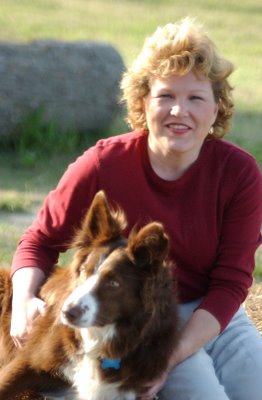2
Myotonic "Fainting" Goats...What a treat! Welcome Beau and May!
Posted by Annie
on
3:37 PM
in
Fainting Goats,
farm living,
Myotonic goats,
Raising fainting goats,
Tennessee Fainting Goats,
Texas Stiff-Leg Goats


We have two new additions to the menagerie!
We have acquired "May" (3 months old, on the right in the top photo) and "Beau" (5 months old, on the left in the top photo). They are Myotonic Goats, also known as "Fainting Goats."
The breed is one of keen interest and fascination to lots of folks. They are down right entertaining! When startled or overly excited,
these goats "faint." Their legs get stiff and they will either walk "stiff legged" or simply fall over. The "fainting" doesn't hurt the goat...it's a part of the genetic make up of this breed. "Myontonia Congenita" is a genetic disorder and is hereditary.
These goats are thought to have originated in Nova Scotia and were first noted in the United States in the 1800's by Jon Tinsley.
"Fainting Goats" have lots of nicknames that include Nervous Goats, Wooden-Leg Goats, Stiff-Leg Goats and even Scare Goats!
This all adds to the intrigue of the breed.
Our new additions are a "breeding pair"...in other words, they are unrelated and I will be able to breed them. Typically, "Fainting Goats" have twins or triplets. They can "kid" (have kids!) up to twice a year! That's potentially a lot of goats!
These goats are classified as "meat" goats...which we don't say too loudly around here...and their milk is also used for consumption as well as making goat milk soap, or as ingredients to other toiletries. Unlike other meat goats, the Myotonic goat is more valuable alive, as they are a rare breed. Myotonic goats are listed as "threatened" by the American Livestock Breeds Conservancy so the Fainting Goat is not used as often for chevon (goat meat) as other meat goat breeds. The Fainting goat is specifically specialized for smaller production operations as they are unable to challenge fences as vigorously as larger goat breeds, due in part to the overall smaller size and also because of the myotonia.
I have learned that many people take them in pairs as pets. They have great dispositions and are medium to smallish in size. They can weigh anywhere from 60 pounds to 175 pounds (for the larger stature goats) at maturity. Size-wise, there's a lot of wiggle room to consider with their height and weight. They come in a variety of colors, however the prominent colors are black and white. They are very sweet, so a wethered (neutered) male makes for a good pet. All my male goats, with the exception of "Beau" are wethers. Goats are herding animals, so I'll offer a word of caution to anyone considering goats for pets: It's not a good thing to get ONE goat of any breed. They prefer at least one other goat to "herd" with. We keep two donkeys as herd protectors for our goats.
When raised as pets, Myotonics are intelligent, friendly, easy to keep and amusing! We find our new kids to be a great addition to the rest of the "family!"
I will keep you posted on the ANTICS of Beau and May, pictures as they grow and our new experiences in raising them.
We are so excited to have them and look forward to our new adventures in working with Myotonic "Fainting" Goats!
Thanks for stopping by!
Till next time,
Annie





